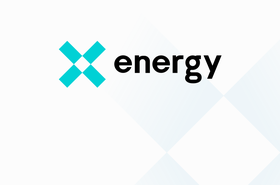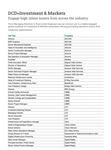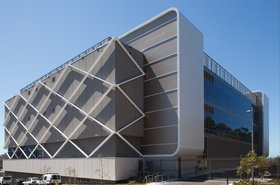The year 2024 brought us record data center mergers and acquisitions, as well as campuses planned for multiple gigawatts. It doesn’t seem like you can get anyone’s attention unless your campus is at least 500MW.
With last year fading away like my enthusiasm for New Year’s resolutions, let’s take a look back and grade my attempt to decode the digital tea leaves for 2024 and see how I performed.
1) At least one hyperscaler will submit a license application for a Small Modular Reactor (SMR) in 2024
Grade: F
In my predictions for 2023, I predicted that a data center or cloud operator would sign up for nuclear power, and was correct. In 2024 we saw a flood of hyperscalers signing deals of all shapes and sizes for SMRs. Some made investments in the SMR firms, while others signed deals for a specific number of megawatts to be provided. The data center industry is all-in on nuclear power to be sure.
In making this year’s prediction, I should have worded it differently. Most deals for nuclear power are similar to renewable energy deals, meaning that they are power purchase agreements for the offtake of a specific amount of energy. So, a hyperscaler wouldn’t be the entity submitting for the license.
That said, I can’t find any evidence a license application has been filed by an SMR provider for a project related to a data center provider. The process in the US is very transparent and flows through the Nuclear Regulatory Commission (NRC). In reviewing their current list of submittals, only one is not a renewal. Although it is by Kairos Power, who is contracted with Google for 500 MW; it is clearly for their Hermes 2 demonstration plant in Oak Ridge, TN, and not specific to a data center provider.
I suspect there may have been a submission made in Europe on behalf of a hyperscaler, but don’t know how to track down evidence of such. If anyone reading this can help me with proof, I would happily apply for a revision of this grade to help improve my GPA.
2) AI-induced power shortages drive data centers to secondary and tertiary markets
Grade: A+
You could say I gave myself a layup with this one, but if you’ve ever seen me play basketball, you’d know that I can mess up a sure thing. As I quoted in my predictions at the time, AWS was confirmed to be planning a $10bn data center campus in Madison County, MS, and Google confirmed its involvement in a data center campus in Fort Wayne, IN.
The extreme power demands of AI data centers have given rise to the gigawatt (GW) data center campus. It wasn’t long ago that a 100MW campus was considered a good-sized development, but you can’t get anyone’s attention unless you are planning at least 500MW now, and multiple GWs are becoming commonplace.
In December 2024, Meta officially announced its 4 million square foot, 2GW campus in Richland Parish, LA. If you’ve ever been through that area, you couldn’t even say this is a tertiary market with a straight face. This will continue into the foreseeable future with the adder of bringing your own power if you want schedule certainty.
3) The CHIPS Act will worsen the data center construction labor shortage
Grade: A
Although the full effect of the CHIPS Act has not yet been felt, it has most definitely had an impact on the labor markets. There are multiple locations that have been robust data center markets for some time and the semiconductor projects in those areas are about to really get moving. This will take the labor markets in those areas from already stressed to the breaking point.
On a less positive note, it is unclear if the new administration will continue to support the CHIPS Act funding. The White House website I embedded in the prediction last year that gave details on the act is no more, but many experts believe the new administration will continue to support the act.
4) AI drives Edge and prefabricated data centers
Grade: D
In making this prediction, I compared myself to a gambling addict by doubling down on a prediction I made in 2023. Well, guess what, I lost again! My logic was that AI would magnify the growth of the Edge, which would logically be accommodated using prefabricated data centers (PFDCs).
Although I still believe that AI will give rise to many more use cases for the Edge, it hasn’t caught fire as quickly as I thought it would. Based upon a recent report, a US hyperscaler is planning ~20 Edge data centers using modular techniques, so perhaps I was just a bit early in my prediction. The thing that really caught my attention was that each Edge site is planned to be 5-10MWs. The density of AI has blown the Edge right past a couple of hundred kilowatts to multiple MWs!
5) Enterprises will continue to be underserved by colocation providers
Grade: A
The thinking here was that for years, we have been reading about large data center lease deals being signed across the country. Deals where hyperscalers are preleasing entire data centers, if not entire campuses, before ground has even been broken on construction. Where does that leave an enterprise user that needs two megawatts?
It wasn’t that long ago that anything over 2MW was considered a wholesale deal. Now, as mentioned above, we are hearing talk of Edge data centers in the 5-10MW range! Enterprises continued to struggle to find AI-ready colocation space in 2024, which I think is a better definition of the product that I am referring to than saying modern, in chunks less than 10MW. This struggle should push these enterprises toward more cloud consumption.
6) Adoption of AI in construction makes major leap
Grade: C
Typical stereotypes would have you believe that the construction industry is filled with luddites clinging to the traditional means and methods of building. I can assure you that this is not the case. The industry is attracting bright young minds who want to employ the latest technology on the job site.
Although AI has had a place in construction for some time, I thought 2024 would be the year that adoption would make a major leap forward. Sadly, I can’t find enough evidence, or even opinions, to show that it did, so my GPA takes a little hit here.
7) Quantum computing takes a specialized leap
Grade: B
Each year I try to make a prediction on a topic for which I have no business talking about. In 2024, it was quantum computing. I thought that I had read just enough to be dangerous, but that may have been generous. Given that I have no business talking about quantum computing, I reached out to my friend and AI chatbot Google Gemini and, as good friends do, Gemini made me feel better.
Gemini said the prediction was generally accurate due to the following significant milestones:
- Google's Willow chip: This was a major development, demonstrating progress in reducing noise and improving qubit stability.
- Microsoft, Atom Computing, and researchers in Japan also made notable strides in quantum computing research.
Increased focus and investment in the following areas:
- Growing interest and investment from both private and public sectors fueled research and development.
- The field saw increased attention from major tech companies and governments.
Lest I get a big head, Gemini hit me with a dose of reality by saying,” ‘Leap forward’ is subjective: While progress was made, it's difficult to quantify a "leap" and whether it met everyone's expectations. The prediction was largely accurate in that quantum computing witnessed significant advancements in 2024.”
I appreciate Gemini keeping it real with me. I’ll take the positive feedback and the B that goes with it!
8) More states will rethink their data center tax incentives
Grade: D
When I wrote this prediction, the main driver I had in mind was the stress new data centers are putting on the power grid. Further, as an industry, we haven’t done a very good job of reaching out to the communities in which we are locating data centers giving rise to a wave of NIMBYism. Increased scrutiny from federal and state governments regarding the effectiveness and cost of data center incentives has been gaining momentum in some areas as well.
Georgia did rethink its tax breaks, going so far as to consider pausing them. There was a growing awareness of the potential costs and environmental impacts of data centers, leading to increased scrutiny of existing tax incentives. The evidence against my prediction is that Louisiana successfully passed new data center tax breaks and Michigan extended its tax breaks.
There wasn’t the backlash that I expected early in the year. Later in 2024, the Biden administration signed an executive order to open up federal lands for gigawatt-scale data center campus development. So, although I am not going to give myself a failing grade, I can’t justify anything better than a D.
It’s been a heck of a ride!
After 10 years of making data center and tech predictions, and then grading them each year to hold myself accountable, it’s been a heck of a ride! Who knows what the future holds, but I want to thank the good folks at Datacenter Dynamics who have been there since the beginning - back in 2015 when I started my annual digital divinations with a David Letterman-inspired Top 10 list.
I am always interested in hearing how you would grade my predictions. Please give me a shout on LinkedIn or Twitter (I still refuse to call it X) with your thoughts.






